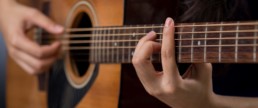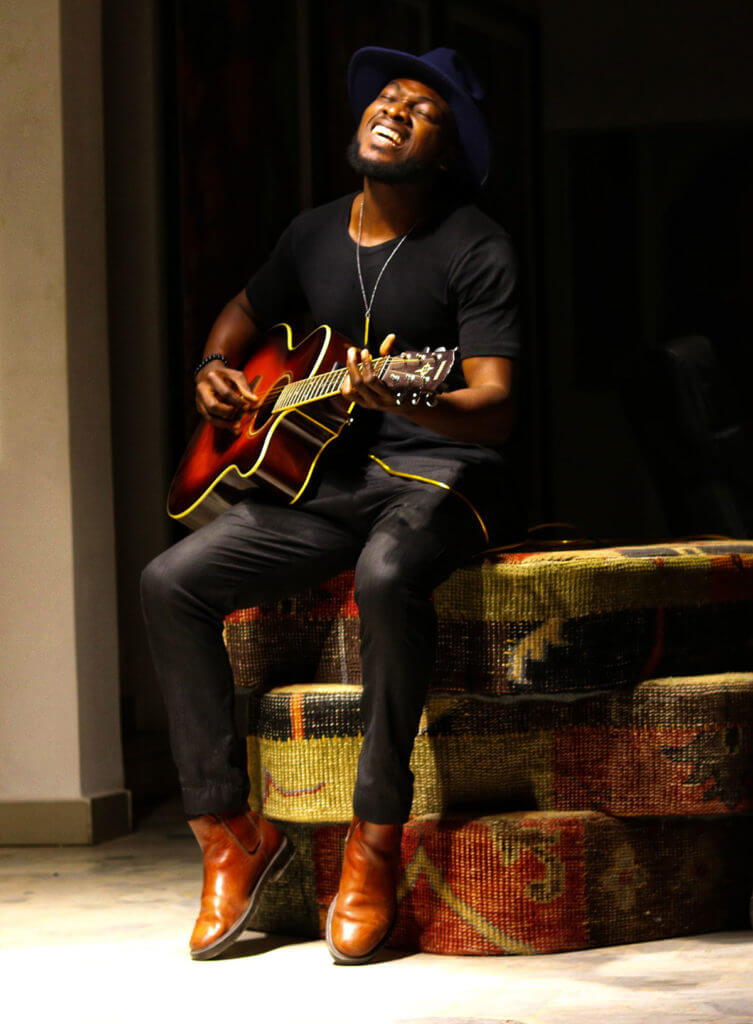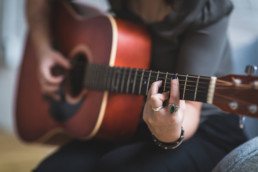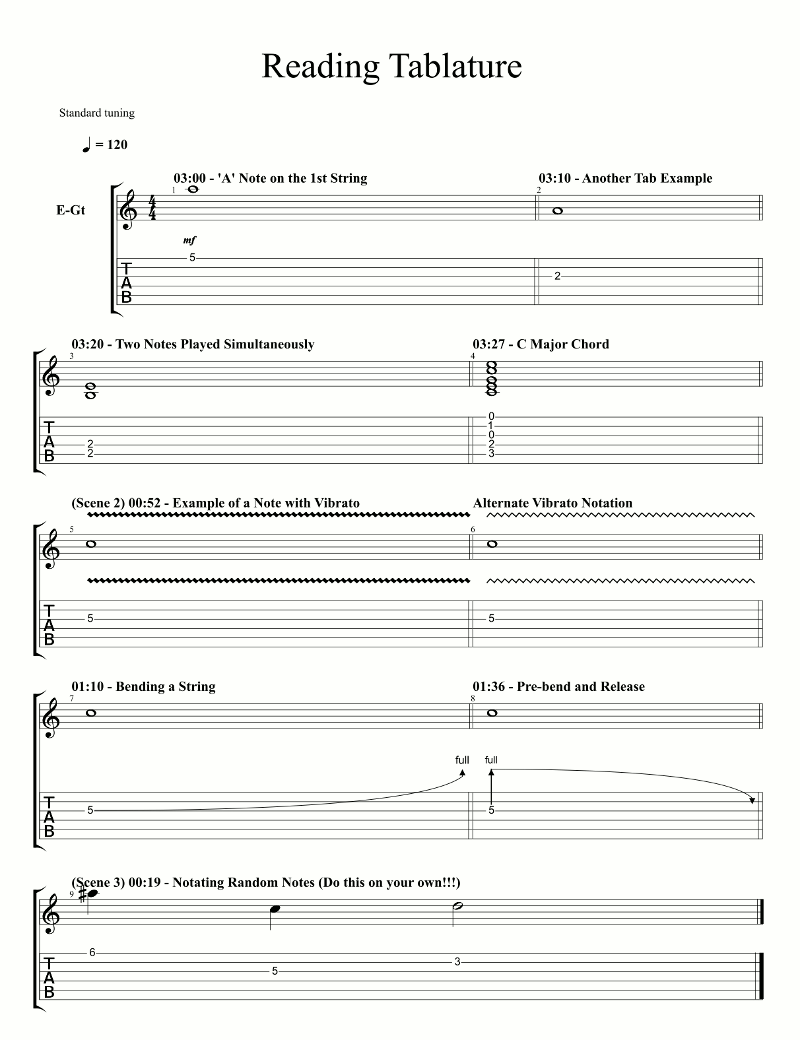Are You Making These Guitar Practice Mistakes?
JP BLOG
Share this
There’s a big lie that guitar players tell themselves.
Have you ever gone to play something on guitar that you could play a few days ago but it sounds like complete crap now? … like you can’t even play guitar.
It’s depressing. And nothing will de-motivate you more than feeling like you aren’t making progress. Newbies love noodling on their guitar without focus for hours… until they realize they’re going nowhere. Then they tend to give up.
 Good guitar players know that not all time spent playing guitar is equal.
Good guitar players know that not all time spent playing guitar is equal.
2 hours of random noodling on Saturday is NOT the same as 20 minutes a day of focused practice. I’ll confess… I used to be a weekend noodler too. I think most self-taught players are… and it’s because no one ever told us the truth …
Here’s What Not To do…
Some guitar players think that learning as much as you can about HOW to do things is how you get good. Of course, the more techniques, licks, and songs you know… the more well-rounded you’ll be. But as a beginner or intermediate player, you don’t have that luxury. You’ll end up taking a very long time to be the jack of all trades, master of none. Guthrie Govan says “Whatever you’ve learned becomes truly useful to you only once it has become second nature.” It’s that second nature part that most people never get to because they move on to the next thing too soon. Like I mentioned earlier, I struggled for years with practice and wondering why I couldn’t progress past a certain point. Then in 2008 I took a job at JamPlay and my eyes were forced open.
What working for a guitar education publishing company has taught me…
The late night noodle fests, long weekend sessions were not what these guys did to get to a world-class level. It had been there all along and I just couldn’t see it because of how stubborn I was. There were fundamental things they did that I did not do. And once I started doing what they did, that’s when the magic started happening. I learned that getting a goal and purpose forces you to focus on solving problems systematically. And that solving problems in your playing is the only way to progress fast. For example, in the past I would play a solo I learned all the way through and gloss over the fast ascending run at the end. I could play 80% of the solo note-for-note but the problem was the fast bit.
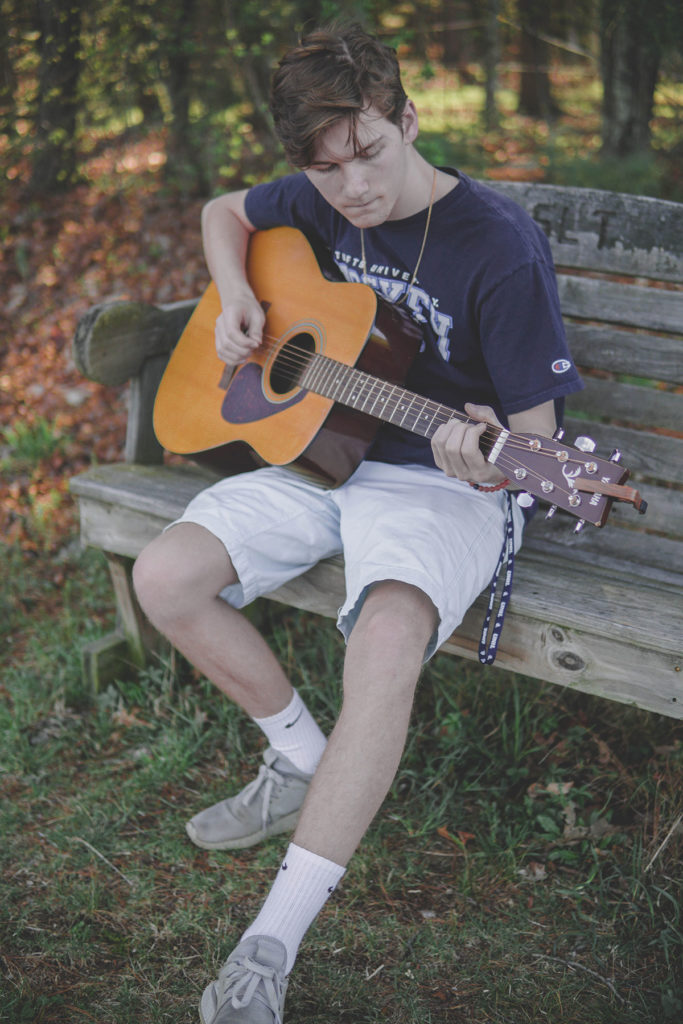 Now, I understand that I don’t need to practice 80% of a song or solo, just the trouble spots. So instead of practicing the entire solo over and over for 20 minutes, I now just practice the trouble spot for that 20 minutes. Can you see how that forces you to improve? It’s not something that only elite guitar players understand. There’s an old principle I recently learned about. It’s known by a few different names … the “80/20 rule” or the lesser known “Pareto Principle” (learn about it on Wikipedia).
Now, I understand that I don’t need to practice 80% of a song or solo, just the trouble spots. So instead of practicing the entire solo over and over for 20 minutes, I now just practice the trouble spot for that 20 minutes. Can you see how that forces you to improve? It’s not something that only elite guitar players understand. There’s an old principle I recently learned about. It’s known by a few different names … the “80/20 rule” or the lesser known “Pareto Principle” (learn about it on Wikipedia).
Basically it states that 80% of the benefits comes from 20% of the effort. It applies to most things in life including guitar playing. “Practice your worst skill until it’s your strongest … and your playing will improve drastically” -Steve Eulberg
It’s important that you always remember that your practice sessions aren’t supposed to be jammed full of every technique and concept under the sun. They should be systematically upgrading specific skills to accomplish your goals. Focused DAILY PRACTICE, not weekend marathons is the best way to get good at guitar.
DON’T BE JUST A WEEKEND NOODLER.
Action Steps:
- Avoid procrastination by getting a solid goal with your guitar playing.
- Once have learned something, master it by using focused practice.
- Focus your practice by working on problem areas and weaknesses that are holding you back.
- Avoid noodling and limit practicing things that you’ve already mastered.
- Hold yourself accountable by tracking your progress. (Download our free practice template here.)
- Don’t just learn songs and move on. Use the 80/20 principle and hone in on the trouble spots.
If you do these things you will see a big difference in your playing in a short amount of time. And that progress will keep you motivated to continue practicing… which is how you get really REALLY good at guitar.
Related Posts
Comments
3 Ways to Effortlessly Transition Chords: Guitar 101
JP BLOG
Share this
In order to effortlessly transition chords you need to do 3 things:
1) Change your mindset on guitar chord fingerings. There usually is more than one way to finger a chord and you’ll need to memorize the common ones. These alternate fingerings help you with the next part which is…
2) Understand that it’s these alternate fingerings of chords that allow you to switch chords with the least amount of finger movement. That’s the trick to chord changes.
3) Taking a few minutes to observe a given chord progression you’re working on. Now you can strategically choose the appropriate chord fingerings for maximum efficiency of movement. Orville gives a few examples in the video.
Related Posts
Comments
Guitar Lesson: Doobie Brothers Long Train Runnin’
JP BLOG
Share this
JamPlay instructor DJ Phillips breaks down the individual guitar parts, as well as the harmonica solo for this classic tune. In this video, DJ will demonstrate how to play the main electric guitar part of the song. To learn the transcribed harmonica solo as well as the acoustic accompaniments, check out the lesson on JamPlay linked below.

Related Posts
Comments
Guitar Lesson: Learn a Blues Turnaround in 2 Minutes!
JP BLOG
Share this
Learn how to play blues guitar with this simple 2 minute lesson on the most used turnaround in blues! Download and print the guitar tabs below for even more variations!
Related Posts
Comments
A Guide to Relative Tuning
JP BLOG
Share this
There are many ways to tune a guitar, including electronic tuners, pitch pipes and tuning using a piano. So many options can be daunting in the beginning so I have laid out one of the standard methods, relative tuning. This means to be able to tune the guitar in relation to itself. At the bottom of the article you will see a diagram illustrating the method, but I will explain it verbally first.
First of all this method has limitations because if the first string of the guitar is not up to concert pitch (the standard pitch that every instrument in an orchestra would tune to) then the guitar will sound in tune to itself but not in comparison to other instruments.
Here is how we relatively tune the guitar:
- We start on the thickest string (the one closest to us, the 6th string), press down on the 5th fret and compare the pitch of that note to the OPEN string above (5th string). It should be the same pitch. If not, then tune the open string up or down according to the pitch of the fretted note. Once the open 5th string is in tune to the fretted 6th string you can proceed to the next string.
- Now we repeat the exact same process on the next two strings. Press on the 5th fret 5th string and tune the open 4th string to that note. Once the open 4th string is in tune to the fretted 5th string you can proceed to the next string.
- Now we repeat the exact same process on the next two strings. Press on the 5th fret 4th string and tune the open 3rd string to that note. Once the open 3rd string is in tune to the fretted 4th string you can proceed to the next string.
- These next two strings are where we see a slight change in the fret we tune from. Press on the 4th fret 3rd string and tune the open 2nd string to that note. Once the open 2nd string is in tune to the fretted 3rd string you can proceed to the final part of the tuning process.
- Press on the 5th fret 2nd string and tune the open 1st string to that note. Once the open 1st string is in tune to the fretted 2nd string you are done!

You may need to check the tuning 2 or 3 times before the tuning is stable. Learning to tune this way will not only give you an easy way to tune, but it can help improve your ability to hear and identify tones little by little. Enjoy!
Authored by: Nick Kellie
Related Posts
Comments
How To Read Guitar Tab
JP BLOG
Share this
What Is Tablature?
Tablature (tab) is a system of writing music for the guitar. It makes reading music easier and more convenient for guitarists than standard notation. On the guitar there are many different frets that will produce the same pitch, so when reading standard notation there can be some ambiguity on how to play a written part. Tablature shows the player exactly where to play a given note on the guitar.
How to Read Tablature
There are six horizontal lines written. Each line represents a string on the guitar. The top line represents the 1st string and the bottom line represents the 6th string. When there is a number written on the line, it represents a fret. Play the fret corresponding to the number on the string corresponding to the line. For example, if a there is a 5 on the top line, it is referencing the 5th fret on the 1st string. If there is a 0 on the line, it means to play the open string. Chords can be written by stacking numbers on multiple lines in the same spot.
Note Variation
There are different ‘effects’ that can be given to notes you play on the guitar, and there are ways to indicate different effects for a note in tablature.
Vibrato
Vibrato is when you wobble your finger to make a vibrating effect on the note you are playing. The tablature symbol for vibrato is:
Vibrato Symbol
You may also see it written as a series of connected ‘v’s.
Bend
To bend a string, play a note and then push/pull the string to the side with the finger that is holding the note. This will smoothly increase the pitch a small amount. The tablature symbol for a bend is:
Bend Symbol
You may also see it written as “b”.,,
Pre-bend/Release
A pre-bend is when you bend the string and then play the note. A release is when you smoothly move the string back to the original position, like a reverse bend. This technique is notated as:
Your Turn
It is very important to practice and become skilled at reading and writing tablature. To start, play a random sequence of notes and then write them down in tablature. It doesn’t matter if the notes sound musical or not. The goal is just to develop a better understanding of how tablature works. After you have practiced writing notes you have played, do the opposite. Write a random sequence of notes in tablature and then play them on your instrument.

